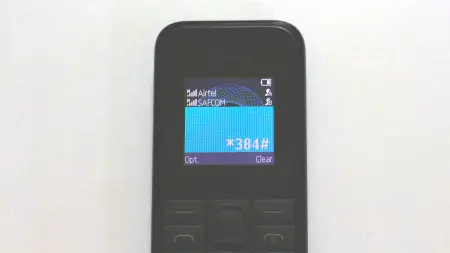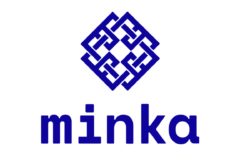Despite the growing ubiquity of sleek, internet-powered apps to carry out digital transactions, the fact remains that 9 out of 10 mobile transactions in sub-Saharan Africa flow through Unstructured Supplementary Service Data (USSD). TechCabal has written about this persistent protocol before, highlighting its continued reliability not only for those who own feature phones but for smartphone users as well.
Last year, we covered the launch of Stax, an offline mobile app that seeks to give a desperately-needed makeover to USSD’s drab interface and offer users an aesthetically pleasing and seamless experience.
As Stax, owned by US-based developer Hover, celebrates its first anniversary, TechCabal caught up with its CEO and co-founder, Ben Lyon, to discuss the startup’s commitment to providing offline mobile banking services, its growth aspirations, and upcoming features on its app.
USSD is here for the long haul
Back in the early 2000s, when many Africans were still getting used to their newly acquired mobile phones, they relied heavily on USSD to check and top up their airtime. It quickly became an important channel for mobile banking, and eventually, users started to use USSD to purchase internet data, send money, and pay their bills. The fact that USSD is accessible on multiple types of phones and functions offline has helped it retain popularity 2 decades on.
One might assume—understandably so—that USSD exists under constant threat of the internet. It doesn’t help that the design of USSD, despite its proven efficiency, make for a poor user experience, which could compel a user to migrate to more intuitive mobile apps.
Stax claimed to possess a deep understanding of USSD’s continued importance in African markets and users’ needs for a smooth and simple mobile banking experience. This understanding was the impetus for the company to build what they hoped would become a universal money app for Africa, where users can link all of their bank accounts and mobile wallets—and, soon, their crypto wallets, too.
The app’s technology automates the standard USSD menu, meaning, instead of dialling a bank’s USSD code, Stax users simply need to tap a button on the app, while utilising the efficient USSD backend. Lyon said that Stax is looking at possibly creating its own USSD codes through Africa’s Talking, a telecommunication solution provider, and using those codes to access more information services, even when they’re offline.
Hover co-founder and CEO, Ben Lyon, told TechCabal over a call that while Stax is currently only available in 9 African countries, it is still pursuing continent-wide opportunities to expand, and as such, it is imperative that it targets USSD, the centre of digital commerce, and tap into users’ strong preference to turn off their mobile data.
He explained that the types of phones most Africans own—half of which are feature phones—is further reason to focus on smoothening USSD transactions.
To Lyon, this reality, much like USSD itself, will not change any time soon. Not even increased fintech industry funding and improving mobile connectivity and internet penetration will threaten the need for a USSD-powered solution like Stax.
“We’re not going to see, over the next few years, more data consumption,” he said. “Instead, we’re actually going to see more data metering, and so I think the size of the offline market is actually growing.”
To prove his point, Lyon referenced a Caribou Data study that found that 94% of financial digital transactions in Africa are made using USSD, leaving 6% of those transactions to come from elsewhere, like internet-based financial products. That, Lyon said, is what distinguishes Stax from the fintechs pursuing a much smaller opportunity in the 6% internet-facilitated transactions.
Other studies on the rising cost of data in Africa further substantiate the argument on which Stax builds its vision. In a Worldwide Mobile Data Pricing 2021 report from Cable.co.uk, sub-Saharan Africa ranked as the most expensive region, with the average price for 1GB of mobile data coming in at $6.44, followed by Oceania at $5.51 and South America at $5.25.
Since coming out of beta last May, more than 200,000 people have used Stax’s mobile app, and it has seen as many as 40,000 monthly active users. It is focusing on retention and hoping to turn on a growth engine that will see it acquire 45,000-plus new users or more per month.
After it secures a Series A funding round, Stax intends to expand its service to tens of markets across Africa.
Solving the fragmentation problem
Lyon explained that fragmentation, both of Android phones and USSD codes, was one of the biggest challenges Stax faced in building its product. Stax has to ensure that its USSD technology is compatible with its users’ Android phones. Stax has to ensure that its USSD technology is compatible with its users’ Android phones, but that leads to a lot of work on their end. This has required his team to constantly test their technology on hundreds of makes, models, and versions of Android devices, including Tecno, Infinix, Huawei, and Samsung—all of which are common phone brands in African markets. But this, Lyon believes, made Stax a defensible business.
In proprietary data, Stax claimed to have purchased from Caribou Data; as of September 2020, 8% of Android users in Nigeria were still on Android version 4. “If you want to make sure that your product works for those users, you have to do all of this reverse compatibility, so you’re not just building on the latest Android versions, because that won’t work for 90% of the market,” he said.
Stax navigated a similar obstacle with USSD. Lyon called it a “fractal problem”, where there are no standards in the use of USSD for digital money across Africa. This forces Stax to do a lot of testing on their own and it tends to be arduous. “You don’t have standard error codes, standard responses; and services change from one user to another.”
One solution Stax has built is a USSD directory that gives users a comprehensive view of the global USSD landscape. The directory also has a built-in searchable index of USSD services globally to reduce the friction between USSD and users across Africa.
Stax’s aim to prioritise user experience and eliminate or reduce data use to drive growth is not new on the continent. Senegalese unicorn, Wave, got a huge slice of the market already dominated by a telco Orange and a fintech Wari, by delivering an excellent customer experience while consuming very little data and maintaining low prices. In fact, Wave is available to users that cannot afford 3G or 4G subscriptions; and users without smartphones can access the app via QR cards.
Stax for Africa
While Stax’s offline feature has a continental reach, it currently only operates in 11 countries: Ghana, Zambia, South Africa, Cameroon, Ethiopia, Nigeria, Uganda, Tanzania, Zimbabwe, Kenya, and Malawi. The company also caters its marketing to each country based on their unique needs, presenting itself as an app that can coexist with popular banking and mobile money practices in each place. In Kenya, for example, Stax promises users that it can help them better manage their M-PESA accounts, easing the process of moving money from M-PESA to their bank accounts by aggregating them all in one place. In Nigeria, where it’s commonplace for one user to have as many as 5 bank accounts, Stax plays up its feature that allows them to organise all their bank accounts in one app.
Lyon is under no illusions about the possibility that, eventually, more fintechs will transition into USSD to capture USSD users on the continent, raising the level of competition with Stax. In fact, it is already happening, he said. African fintechs like Barter by Flutterwave, Opay, and Abeg have all built USSD modes into their apps.
He maintains, however, that Stax is still better positioned to seize the opportunities in the market due to the years—since it launched in 2017—that the company spent building a core USSD infrastructure. Hover agreed with this, which was why Lyon decided in 2020 to pivot the parent company’s attention exclusively to Stax.
As an entrepreneur, Lyon welcomes competition and inspiration from other companies. He cited True Balance, an Indian payment app that was initially built for users to manage their phone recharge, bill payments, and balances without remembering complicated USSD codes. The app has since expanded its services to help users pay their mobile and electricity bills, added an e-commerce arm as well as credit services, and in the process amassed 60 million users. Stax, Lyon said, has been eyeing the success of True Balance and taking notes.
What are the next steps for Stax? The company hopes to become an offline payment super app by embedding third-party services onto its app. It hasn’t started building the infrastructure for that just yet, but its offline payment play is taking off. Stax currently supports more than 100 bank and mobile money services across 9 markets. In Kenya, it works with 30 different banks, M-PESA, and Airtel Money. In Nigeria, it supports all of the major banks and several of the microfinance institutions (MFIs)
Although Stax does not support any cross-border payments, pivoting to crypto will allow it to support international transactions. It plans to launch a self-custody USDC wallet, which will allow users to transfer money to anyone with a public address.






















